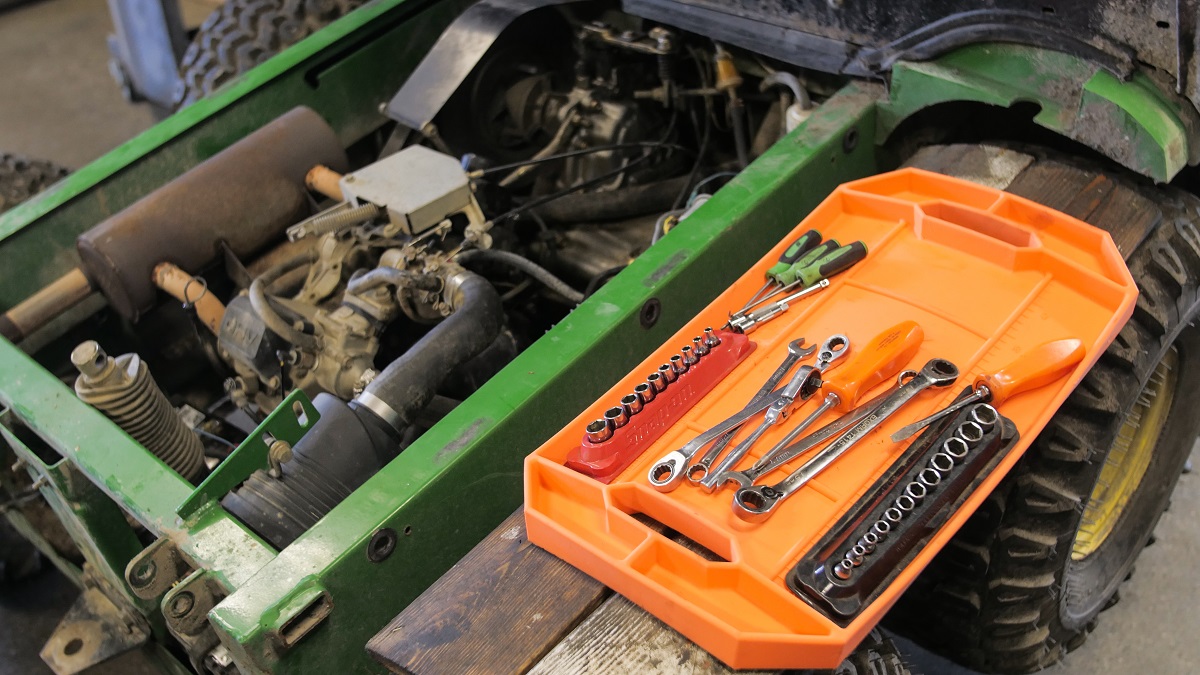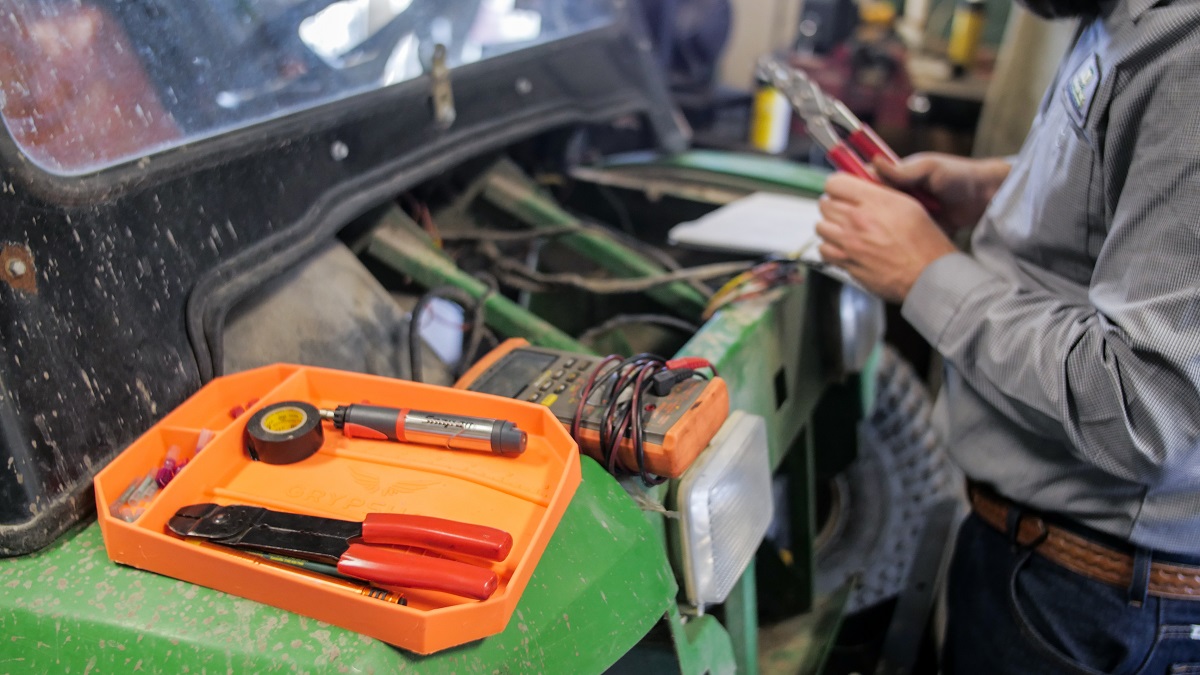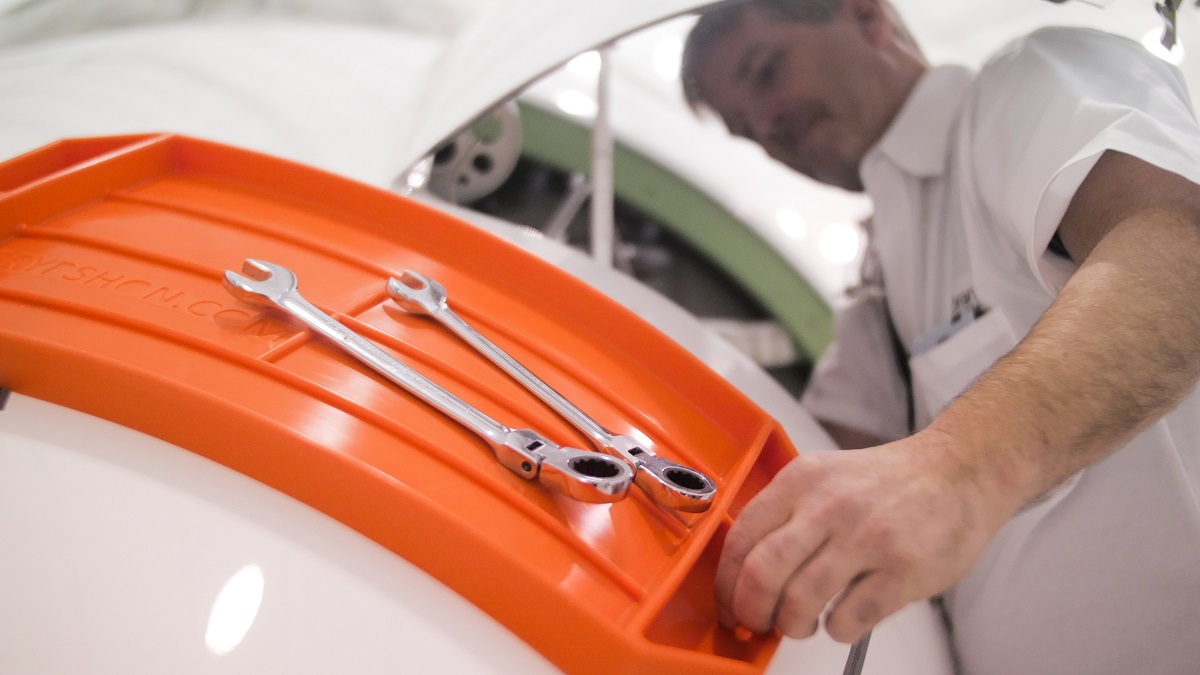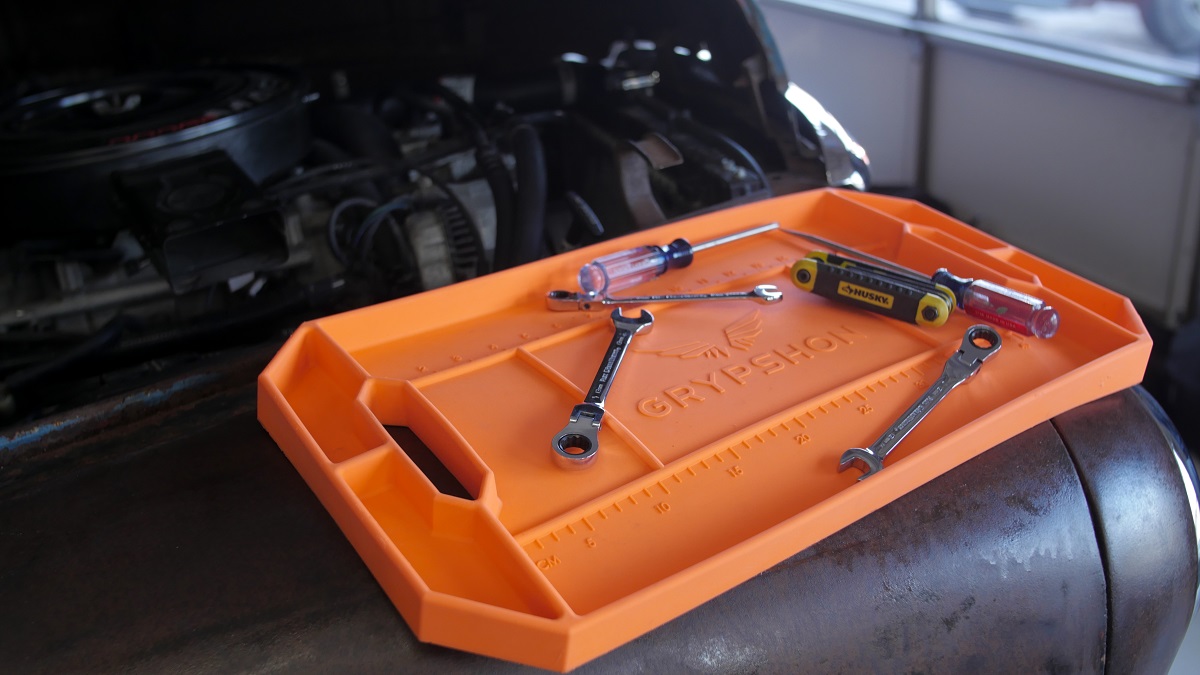I don’t know about you, but I’m guilty of accidentally dropping tools into my vehicle’s engine (more than a few times). And it’s never fun.
First you have to make sure your tool fell all the way through. If not, you have to use a high-powered flash light, crane your neck to try to see where it could have gotten stuck, and then jam your hand down into a crevice so small a child couldn’t do it, all to retrieve a stupid wrench that should never have fallen into the engine in the first place.
But hey, it’s not your fault! Unless you’ve got a tool cart you can sidle up to your vehicle when doing engine work, you often have nowhere to place your tools when not in use other than the near the windshield wipers or on the edges of the engine casing (or on the engine itself). And if you’re an airplane mechanic you can forget about even trying to rest a screwdriver within arm’s reach since the rounded edges of the plane’s body leave virtually no place to rest your tools.
Which is why Tom Burden, founder of Grypshon Industries took it upon himself to create the Grypmat.
“Working as a mechanic in the United States Air Force, I grew increasingly tired of not having my tools within easy reach when working on top of the aircraft–tool loss and missing hardware was a constant problem, and I nearly fell of the plane chasing a sliding tool!” says Burden. “I invented the Grypmat to prevent these issues, and to make it truly easy to keep tools and hardware within comfortable reach–so you can just focus on the work in front of you.”
Grypmat is a non-magnetic, non-slip, chemical resistant rubber tool mat that keeps your hardware and tools in place, no matter where you place it. Made from a unique poylmer-silicone blend, Grypmat has been shown to hold tools, nuts, bolts, and anything else you need at extreme angles (even up to 70 degrees), and, because the mat is flexible, it can rest on curved surfaces without sacrificing its grip. It’s also chemical- and dirt-resistant, making clean-up as easy as wiping with a wet rag.
The Grypmat comes in three sizes: small, medium, and large. The small mat, with its six individual compartments, can be used for holding nuts, bolts, screws, and smaller tools. The medium sized Grypmat is best for keeping hand tools together in close proximity, and the large is designed to handle large tools for more intense jobs.
The Grypmat is available for backing now via Kickstarter–pricing begins at $25 for the smallest mat. To get all three, you’ll need to pledge $100.






